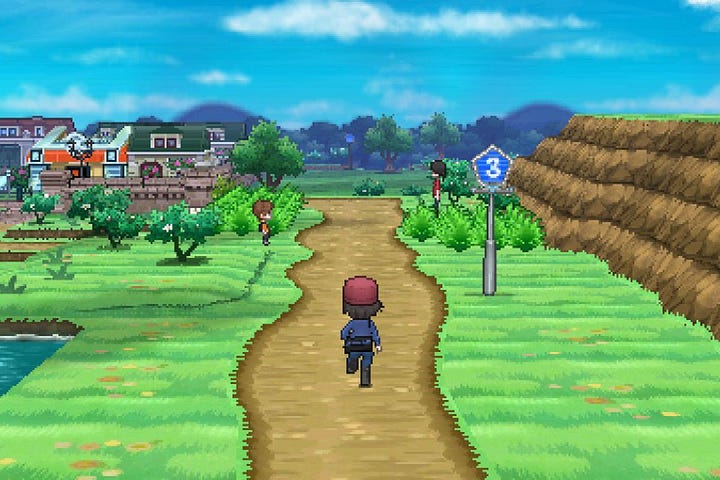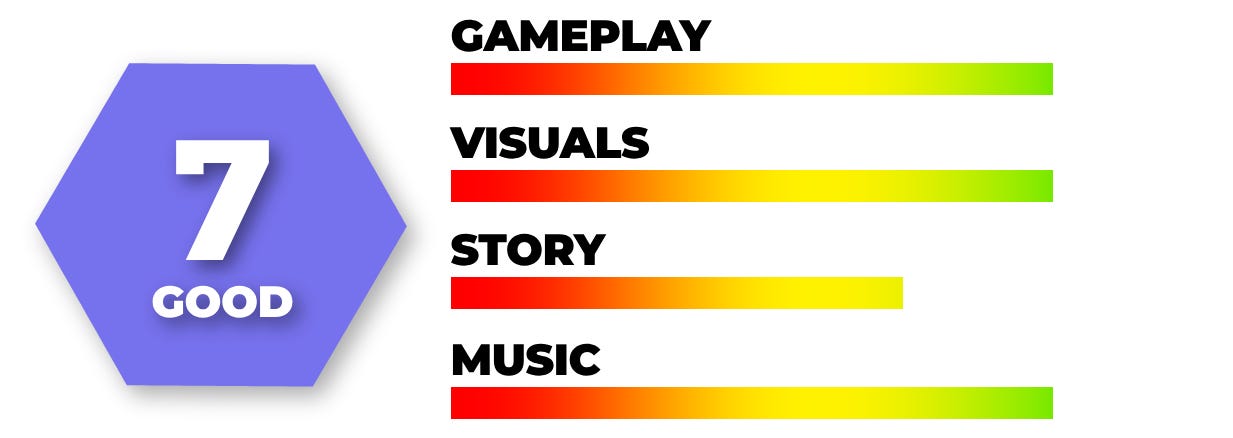Pokemon X and Y (3DS, 2013)
Another enjoyable entry in the beloved series, and an important step towards full 3D.
Nostalgia Factor: Low. I’m a long-time Pokemon fan, but that factored in little here.
Difficulty: Easy to medium. Exp. All will make this game a breeze, or turn it off for a more grindy playthrough.


Are we there yet? For years, I longed for a truly 3D mainline Pokemon game. After marveling at Mario 64 and Ocarina of Time, I kept wondering, “Why don’t they make a full Pokemon game like this?” Pokemon Stadium and Pokemon Snap were curious experiments, but the mainline games remained affixed to Nintendo’s handhelds.
Pokemon Colosseum and XD: Gale of Darkness for the GameCube could be considered “full 3D”, but they were unique 3rd party spinoffs (developed by Genius Sonority), lacking the full list of features we expect from mainline Pokemon entries. Pokemon Diamond/Pearl arrived for the Nintendo DS, but remained largely 2D, or “2.5D”, a swath of pixel sprites in a pseudo-3D environment (some 3D depth and parallax). Black and White 1 and 2 dipped a little deeper into 3D with Skyarrow Bridge and Castelia City, but the majority of the game remained 2.5D.
Then, finally, with the release of the 3DS and Pokemon X and Y, we see a huge step towards a proper 3D mainline Pokemon game. Certainly, the limitations of the 3DS could lead to some arguments that X and Y are not “full 3D” (like the Pokemon releases on the Switch, for example), but there’s a clear difference between Gens 4-5 (Diamond/Pearl, B/W 1&2) and X and Y. They’ve made the jump. The sprites have gone away and have been replaced by cell-shaded 3D models and environments.
I really enjoyed my time in the Kalos region, which is loosely based on France. Aside from the nice looking visuals (understanding the limitations of the 3DS of course), there are some other nice new features as well. X and Y introduces the new Fairy type, which is the first Pokemon type to be added since Dark and Steel types were introduced in Pokemon Gold/Silver (1999). You can now customize your trainer and “Mega Evolve” several kinds of Pokemon.
The 3DS also brought much higher audio quality than we’ve seen from previous entries. Warning, audio nerd stuff: The Game Boy had wonderful chiptune processing, but the Game Boy Advance had horrendous audio compression due to it’s limited cartridge space. Music files were compressed way down, sometimes with a sample rate as low as 11khz. Check out the Advance Guardian Heroes soundtrack – it sounds like it’s being played on an old Nokia cell phone.
Most SNES music files were compressed at 32khz, which sounded fine (standard CD audio is 44.1khz). The DS has a similar audio output as the SNES (32.7khz), but the 3DS can output sample rates up to 48khz. Also, more space on 3DS carts means higher-quality orchestral music files and less reliance on midi. All that to say, the soundtrack for X and Y sounds great. It’s so nice to hear Pokemon music in such crystal clear high quality. There’s some really great tracks too.
The story was fine. It’s riddled with loads of what I call “Pokemon plot.” Some story beats were a bit silly and outlandish, like something out of a kids cartoon. I did, however, enjoy the slice-of-life elements and the conversations between the trainer and his posse of friends. It was really nice to catch up with them on the routes between gyms.
Of course, a highlight of any Pokemon game is the new roster of ‘mons. Some of my favorites include Fennekin, Froakie (and his whole evolutionary line), Pancham, Goomy, and Pumpkaboo.
Overall, I enjoyed Pokemon X and Y. It’s another solid Pokemon adventure. Committed fans of the series will want to make sure they check this one off their list.





